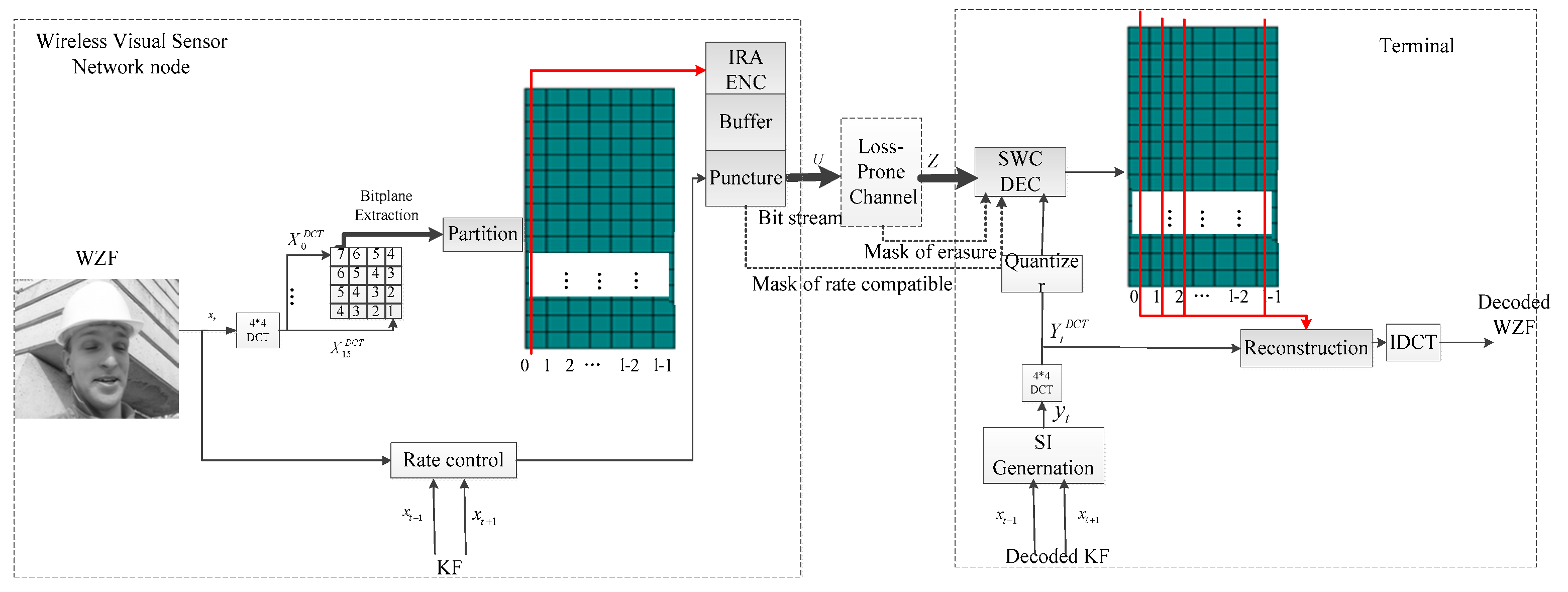Error Resilient Video Coding for Wireless Visual Sensor Network †
Abstract
1. Introduction
2. The Proposed Error Resilience Video Coding
3. Results and Discussion
Acknowledgments
Author Contributions
Acknowledgments
Conflicts of Interest
References
- Koo, B.; Han, K.; Park, J.J.; Shon, T. Design and implementation of a wireless sensor network architecture using smart wireless devices. Telecommun. Syst. 2013, 52, 2311–2320. [Google Scholar] [CrossRef]
- Zhu, Y.H.; Zhang, S.Y.; Ma, J.G.; Nan, E.L. On Education Information Ecosystem Structure. Procedia Eng. 2012, 29, 3537–3541. [Google Scholar] [CrossRef][Green Version]
- O’Neill, B. Towards an improved understanding of modern health information ecology. Soc. Sci. Med. 2017, 173, 108. [Google Scholar] [CrossRef] [PubMed]
- Kallinikos, J.; Mariátegui, J.-C. Video as Digital Object: Production and Distribution of Video Content in the Internet Media Ecosystem. Inf. Soc. 2010, 27, 281–294. [Google Scholar] [CrossRef]
- Tiwari, A.; Fleming, J.K.; Vale, A.M. Method and Apparatus to Provide an Ecosystem for Mobile Video. U.S. Patent 8838696B2, 15 May 2012. [Google Scholar]
- Artigas, X.; Ascenso, J.; Dalai, M.; Klomp, S.; Kubasov, D.; Ouaret, M. The DISCOVER codec: Architecture, techniques and evaluation. In Proceedings of the 2007 Picture Coding Symposium (PCS), Lisbon, Portugal, 7–9 November 2007. [Google Scholar]
- Brites, C.; Pereira, F. Encoder rate control for transform domain Wyner-Ziv video coding. In Proceedings of the IEEE International Conference on Image Processing, San Antonio, TX, USA, 16–19 September 2007; Volume 2, pp. II-5–II-8. [Google Scholar]




Publisher’s Note: MDPI stays neutral with regard to jurisdictional claims in published maps and institutional affiliations. |
© 2017 by the authors. Licensee MDPI, Basel, Switzerland. This article is an open access article distributed under the terms and conditions of the Creative Commons Attribution (CC BY) license (https://creativecommons.org/licenses/by/4.0/).
Share and Cite
Yang, H.; Qing, L.; Peng, Y.; He, X. Error Resilient Video Coding for Wireless Visual Sensor Network. Proceedings 2017, 1, 134. https://doi.org/10.3390/IS4SI-2017-04002
Yang H, Qing L, Peng Y, He X. Error Resilient Video Coding for Wireless Visual Sensor Network. Proceedings. 2017; 1(3):134. https://doi.org/10.3390/IS4SI-2017-04002
Chicago/Turabian StyleYang, Hong, Linbo Qing, Yonghong Peng, and Xiaohai He. 2017. "Error Resilient Video Coding for Wireless Visual Sensor Network" Proceedings 1, no. 3: 134. https://doi.org/10.3390/IS4SI-2017-04002
APA StyleYang, H., Qing, L., Peng, Y., & He, X. (2017). Error Resilient Video Coding for Wireless Visual Sensor Network. Proceedings, 1(3), 134. https://doi.org/10.3390/IS4SI-2017-04002






